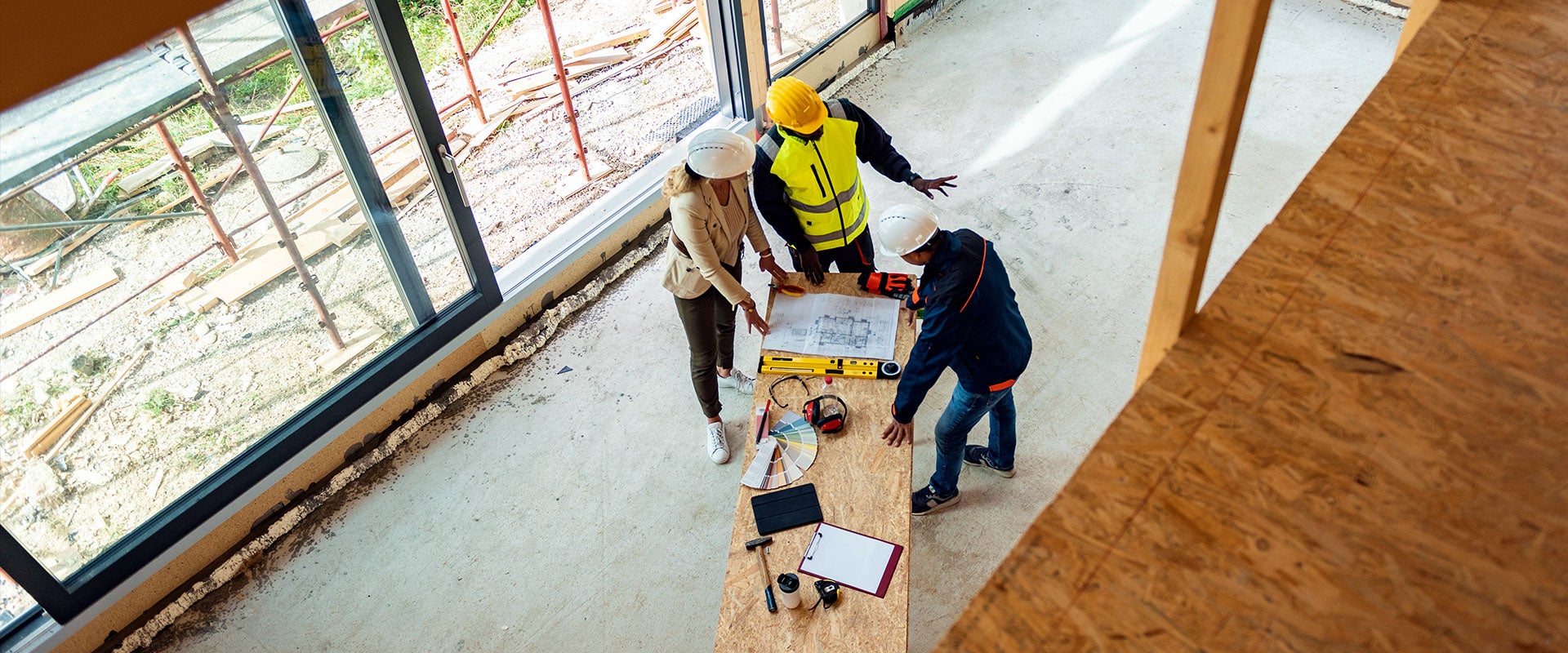- Elevated demand for two to three years: The second year after a storm will typically have elevated building activity that is only slightly less than the first year. In year three, building levels will rise again relative to year two, but will still remain lower than year one. This comes as lots and properties that were abandoned immediately following the storm start to see activity, sometimes at the hands of new owners. It can also be expected that a portion of home and business owners will choose to take insurance payouts and sell without rebuilding.
- Settling into a new normal: After year three, building activity should decline to a revised steady rate that is slightly elevated from pre-storm levels. This may last up to 10 years post-storm due to underlying building industry growth, continued post-storm demand and shortages of building materials and labor.
- Long-term growth: Market participants forecast that 70%-80% of construction will be completed within the first five years, with demand remaining above pre-Ian levels for the next five years. Elevated construction demand can reach the 10-year mark due to some late progress pushed out due to volume, limited labor supply and supply chain delays.
Particular to Hurricane Ian, supply chain efficiency and labor constraints are also expected to affect the timeline of construction demand. Supply chain shortages are actually improving — a recent survey found that 67% of remodelers now see some improvement on product lead times — so the greatest impact we expect to see in this case will come from labor shortages. The industry was already experiencing a shortage of labor prior to Ian; Florida saw a 22% increase in construction starts between June 2021 and August 2022, while the number of seasonally adjusted employed construction workers only increased 3.3% (totaling 593,800).
Hurricane Ian will likely drive further demand for labor that may be difficult to fulfill, not only adding to potential delays in reconstruction but also cost, as wage growth for construction workers in Florida had already been outpacing the national average (9% versus 4% annually, respectively, between 2017 and 2022). Firms that are able to source labor from outside the state may be better positioned to meet the construction demand.
Determining building product needs
For the first few months post-storm, the prioritization of cleanup will mean a high demand for plywood, generators, batteries and window grills to aid in initial recovery.
Different sources of damage will cause a rise in demand for different materials. To address wind damage, builders will need items like shingles and roofing items, power tools, and chainsaws, while flood damage will require drywall, fans, scoop shovels and flooring items. Items like fans, scoop shovels and chainsaws typically see an initial spike followed by a drop-off a few months post-storm. Companies should also expect to see a higher demand for impact-resistant shingles, windows and doors as residents choose to upgrade protections for their properties.
Longer-term demand will remain for products involved in rebuilding such as flooring, power tools, shingles and roofing, with longer stretches of demand for restoration materials like drywall, lumber, siding, doors, roofing, windows and power tools (nonexhaustive).
High demand for these products may last up to 10 years following the storm; for example, data from the Thomas Index shows long-term buyer interest in search terms like doors (1,200% increase from pre-storm levels), drywall (400% increase) and plywood (400% increase).
Other construction and building service providers, depending on the nature of the service, can expect to see an increase in demand throughout this period.
Updating codes
Historically, the Florida Building Commission has implemented more stringent guidelines after each major hurricane, with implications for product needs. For example, the state has a high penetration of storm shutters, which were written into the first edition of the Florida Building Code, and the guidance has since become stricter.
Roofing requirements have also increased over time, including new requirements for asphalt and metal shingles. (The building code requires that an entire roof be brought up to code when over 25% of the roof area requires replacement, which will drive incremental shingle demand.) The most recent, seventh, edition of the code includes changes for updated wind load requirements and roofing updates that make structures more wind- and water-resistant, so demand for more specific products related to these changes should be expected.
Market participants also expect upcoming changes to the Florida Building Code to improve flood resiliency, thanks to the extensive damage from storm surges associated with Hurricane Ian. This will bring in heightened demand for a variety of specific materials. For example, we expect a footage increase in the required height for buildings, to raise them higher above the base flood, which would require more concrete, steel beams, lumber and hydraulic jacks.
However, these changes are not expected to be seen immediately; the need for testing and a lengthy approval process mean changes prompted by Hurricane Ian will most likely be added to the ninth or 10th editions of the code.
Calculating material need
To efficiently provide for the rebuilding of communities in Florida affected by Hurricane Ian, manufacturers, distributors and service providers will all need to map the likely level and timing of demand. But how to best do that?
Most importantly, providers will need to estimate the market needs that include incremental construction demand, the number of properties damaged from the storm and the weighted average material needed to meet the incremental demand.
When it comes to products and materials, we must consider that availability will be dictated by storm-related delivery delays as well as consumer behavior and contractor needs.
Property damage can cause demand knock-on effects, and it is key to understand the purchasing response by both individual consumers and professionals to get a sense of overall demand. For example, L.E.K. found that only 42% of homeowners who purchased a generator had actually experienced a power outage and 47% purchased one as a preventive measure, influenced by caution due to power outages around them. (The remaining 11% purchased a generator as a replacement).
The timing of demand may also be affected by a partial pull-forward of future sales; for example, a damaged 20-year product would see an early replacement instead of the purchase planned for a few years down the road. In other cases, the storm can be expected to generate new needs, perhaps for a certain service, that is separately generated and not pulled forward.
Looking ahead
Special thanks to Vince Machida and Abby Hayes who contributed to this Executive Insights.





